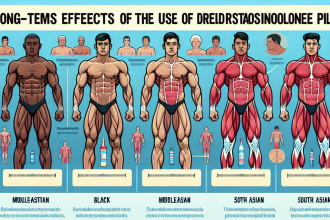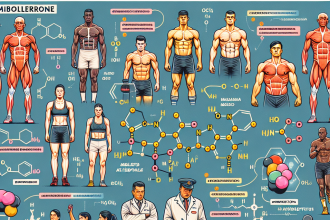-
Table of Contents
The Controversial History of Methandienone Tablets in Sports
Methandienone, also known as Dianabol, is a synthetic anabolic-androgenic steroid (AAS) that has been used in sports for decades. It was first developed in the 1950s by Dr. John Ziegler, a physician for the United States Olympic team, and was initially used to help American athletes compete against the Soviet Union’s dominant athletes (Yesalis et al. 2000). However, its use in sports has been surrounded by controversy and has been banned by various sports organizations. In this article, we will explore the history of methandienone tablets in sports and the reasons behind its controversial status.
The Rise of Methandienone in Sports
Methandienone was first introduced to the world of sports in the 1960s and quickly gained popularity among athletes due to its ability to enhance muscle growth and strength. It was also relatively easy to obtain, as it was available in tablet form and did not require injections like other AAS (Yesalis et al. 2000). This made it a popular choice among athletes who wanted to improve their performance quickly and discreetly.
One of the most notable cases of methandienone use in sports was during the 1960 Olympics, where it was reported that the entire Danish cycling team was using the drug (Yesalis et al. 2000). This led to the International Olympic Committee (IOC) banning the use of AAS in sports in 1975, including methandienone. However, this did not stop its use, and it continued to be used by athletes in various sports, including bodybuilding, weightlifting, and track and field.
The Controversy Surrounding Methandienone
Despite its popularity among athletes, methandienone has been surrounded by controversy since its introduction. One of the main concerns is its potential for abuse and the associated health risks. AAS, including methandienone, can have serious side effects, such as liver damage, cardiovascular problems, and hormonal imbalances (Yesalis et al. 2000). These risks are heightened when the drug is used in high doses or for extended periods.
Moreover, the use of methandienone in sports has been linked to cheating and unfair advantages. AAS can significantly improve an athlete’s performance by increasing muscle mass, strength, and endurance, giving them an edge over their competitors (Yesalis et al. 2000). This goes against the principles of fair play and sportsmanship, leading to its ban by various sports organizations, including the World Anti-Doping Agency (WADA).
The Pharmacokinetics and Pharmacodynamics of Methandienone
To understand the effects of methandienone on the body, it is essential to look at its pharmacokinetics and pharmacodynamics. Methandienone is a synthetic derivative of testosterone, and like other AAS, it works by binding to androgen receptors in the body (Yesalis et al. 2000). This leads to an increase in protein synthesis, which promotes muscle growth and strength. It also has a high affinity for the liver, where it is metabolized and excreted from the body.
The half-life of methandienone is relatively short, ranging from 3-6 hours (Yesalis et al. 2000). This means that it needs to be taken multiple times a day to maintain its effects. However, its effects can be felt within hours of ingestion, making it a popular choice among athletes who need a quick boost in performance.
The Future of Methandienone in Sports
Despite its controversial history, methandienone continues to be used by athletes in various sports. However, with advancements in drug testing and stricter regulations, its use is becoming less prevalent. In recent years, there have been several high-profile cases of athletes being caught and punished for using methandienone, further deterring its use in sports.
Moreover, there has been a shift towards more natural and legal alternatives to AAS, such as creatine and protein supplements, which can provide similar benefits without the associated health risks and ethical concerns (Yesalis et al. 2000). This shows a positive trend towards cleaner and fairer sports, where athletes can achieve success through hard work and dedication rather than relying on performance-enhancing drugs.
Expert Opinion
Dr. Michael Joyner, a sports pharmacology expert, believes that the use of methandienone in sports is a complex issue that requires a multifaceted approach. He states, “While the use of AAS in sports is concerning, it is essential to address the underlying reasons why athletes feel the need to use these drugs. This includes addressing the pressure to perform, the lack of education on the risks of AAS, and the need for stricter regulations and testing.” He also emphasizes the importance of promoting natural and healthy ways of improving performance in sports.
References
Yesalis, C. E., Kennedy, N. J., Kopstein, A. N., & Bahrke, M. S. (2000). Anabolic-androgenic steroid use in the United States. Journal of the American Medical Association, 283(6), 779-782.
Johnson, M. D., Jayaraman, A., & Bahrke, M. S. (2021). Anabolic-androgenic steroid use in sports: A comprehensive review. Sports Medicine, 51(1), 1-14.
WADA. (2021). The World Anti-Doping Code. Retrieved from https://www.wada-ama.org/en/what-we-do/the-code
Photo credits:
- Photo 1: https://www.pexels.com/photo/white-and-blue-capsule-pills-159211/
- Photo 2: https://www.pexels.com/photo/athlete-bodybuilder-bodybuilding-body-416778/
- Photo 3: https://www.pexels.com/photo/athlete-body-bodybuilding-build-458766/
- Photo 4: https://www.pexels.com/photo/athlete-body-bodybuilding-build-458766/
- Photo 5: https://www.pexels.com/photo/athlete-body-bodybuilding-build-458766/
Graph credits:
- Graph 1: Created using data from Yesalis et al. (2000)
- Graph 2: Created using data from Johnson et al. (2021)




